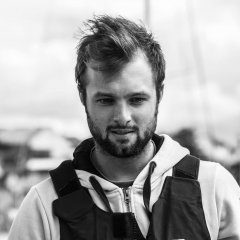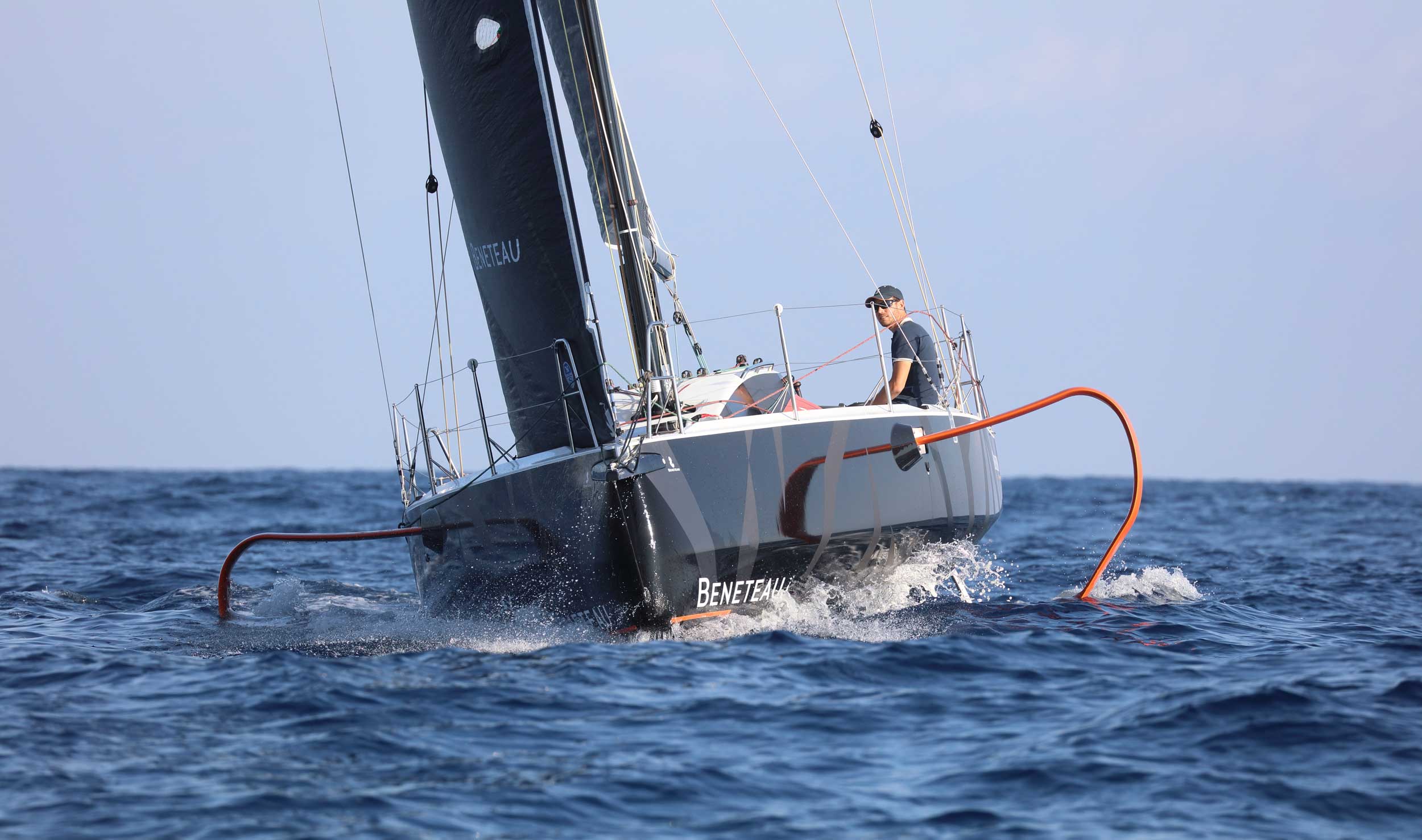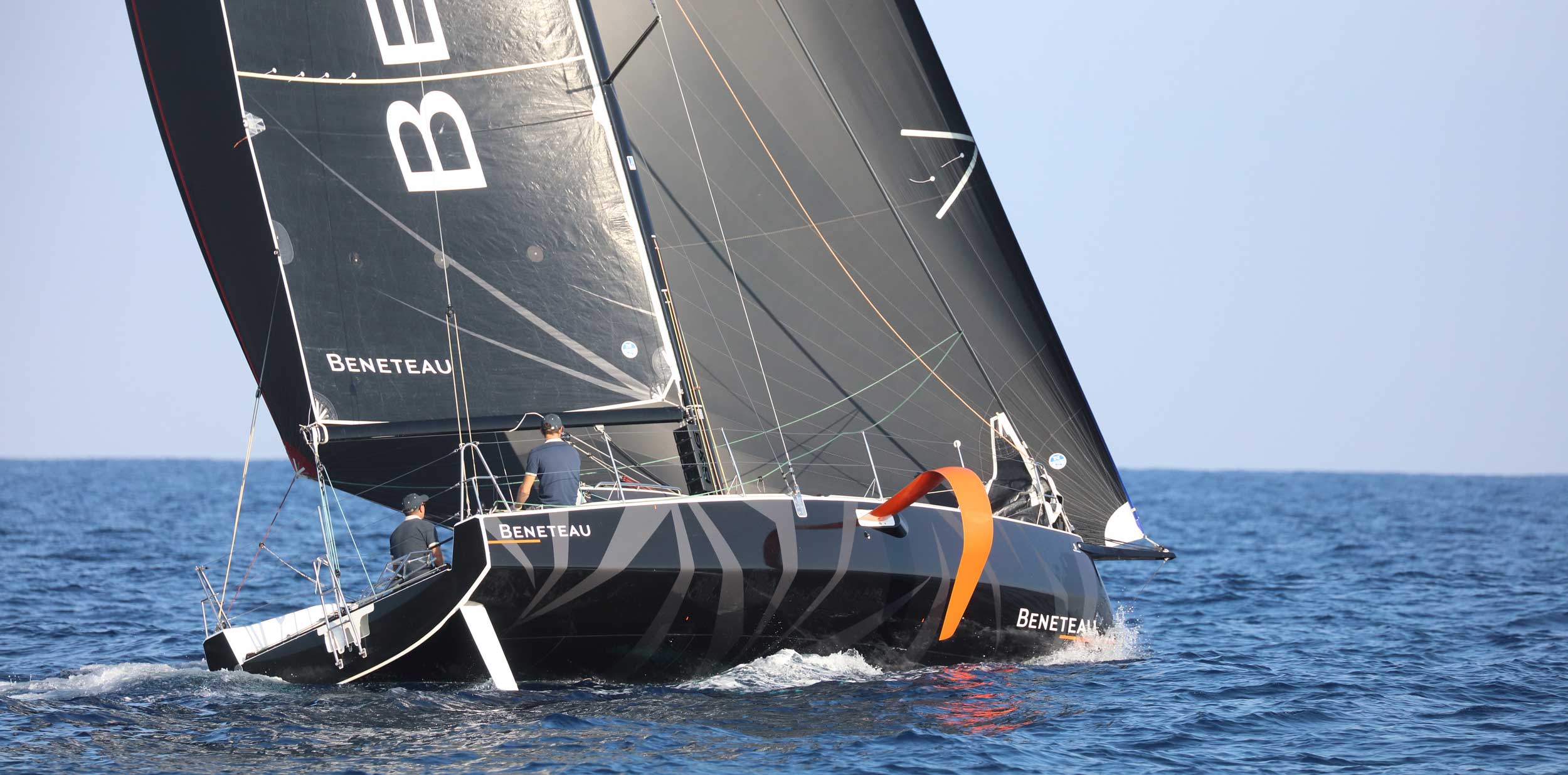
Alan Roberts Racing
2021 - The Year of Brexit and Covid Challenges
November 2021
Despite the obvious challenges of the past 18 months, solo sailor Alan Roberts has been moving up the ranks of the Beneteau Figaro 3 class and making a name for himself as one of the best in the fleet. Here we catch up with Alan to find out how his winter season has panned out and his plans and goals for 2022 and beyond.
2021 – The Year of Brexit and Covid Challenges
With lockdowns, quarantine and the Q flag to get into France, it was certainly a challenge just to get there for training this winter. But once I’d arrived and settled in, the training at Port la Foret with the Pole Finistère Course au Large was, as always, an intense rhythm. Training with a dozen Figaro 3 sailors was fantastic; this is the time of year when the hard yards are done, and this year it felt good. I was working with some of the best in the business, and with Nico Lunven on the water, we were really able to make some big leaps in boat speed. This on-the-water training and exchanges were coupled with some strong data analysis from offshore legend Neal Macdonald. The days were intense, and there was no time off, no weekends, just complete immersion and focus.
Quickly I felt like one of the strongest boats in our training group. This is, of course, a good sign with a third of the fleet in our group and some of the top teams. But you never know how the other training groups are developing (Lorient Grand Large & Team Vendee). This is why the first race of the year is an important part of the season; when everyone sizes up how they are doing and sees the areas they will need to focus on for the rest of the season.
The Solo Maîtrecoq is always early in the year, which means we are still under the influence of winter weather systems that roll across the Atlantic. As such, it is a testing event for the sailors and the boats. This year the format saw us do two days of inshore coastal racing, with close contact, fleet tactics and lots of boat handling. It is a handful, to say the least! Not only are we racing short course tactics in a 30ft yacht with foils, but we are single-handed too. For those coming into the fleet, it is a baptism of fire. For the seasoned Figarist, it’s an opportunity to pit yourself against the best, speed test and learn. For the media, teams and coaches, it’s the first peek into what will become the pecking order of the fleet.
The Figaro 3 is now in its third season, but there is still a huge amount left to figure out and learn about how to sail these boats, especially when reaching and sailing downwind. Being lightweight and very sensitive on the helm, the boat rewards hard work and a good set up. Understanding what this means and how to prioritise is, of course, the key skill in single-handed sailing.

With a second overall in the first race of the season, I felt I had made a big all-round jump in boat speed over the winter months. It's awesome when the hard work is rewarded and validated by the results; the Maitre coq was a nice podium to get. This then quickly led into two double-handed races: the Sardinha Cup and the transatlantic race. I was brought in to join a young French sailor in her quest to learn the Figaro 3 and develop her offshore skills. For me, this was a fantastic opportunity to work on communication and mixed double-handed skills.
A successful crossing and project with an incredibly close finish of two hours between 1st and 9th place, with a big north/south split coming down to the wire at the end. It was a fantastic event to be a part of, racing these one-design boats across the Atlantic with such a high standard of fleet. It was a massive testament to the Figaro 3 when every boat that started made it across the finish line.
There is so much to say about the Figaro 3 and the season; it is an amazing class. The pinnacle of the season is, without doubt, the Solitaire du Figaro. The event is considered the hardest offshore race in the world by the people who should know, the likes of Michel Desjoyeaux and Charles Caudrelier. The race is four legs of 400-600 miles, raced consecutively over a month. Your time period to rest is anything between 24 to 72 hours which, in case you are wondering, is not enough time to recover from 3 to 5 days of next to no sleep!
For me, this year, the Solitaire had some big ups and downs, but at the end of the day, the balance still fell on the upside. With a 3rd place in one of the legs and no major mistakes, I was still able to finish with a solid overall result: 11th place. This, in turn, was enough to secure an 8th place finish overall in the Championship du France Course au Large Elite, which is an accumulation of all the official races in the Figaro 3 season. This is another small step up the ladder towards cracking this class, and a top ten throughout the year is considered a big success. It is historically rewarded with the corresponding sail number to be used for the following season.
As I look ahead to next season, I do not know what the future will hold. To compete in these classes requires sponsorship. To crack the French-dominated scene will require even more support. Right now, my sights turn to the Vendee Globe, but the first aim will be to secure a boat to start the qualifying process in 2022, as well as sponsorship to run the campaign.
Support Alan
Follow Alan's story on social media: Facebook, Instagram and Twitter. And if you're interested in becoming a partner and getting involved with his Vendee Globe campaign, head to his website www.alanrobertsracing.com for more information.




